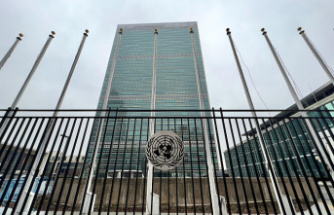Shanghai said goodbye to May with the hottest day in its history in that month: temperatures reached 36.1 degrees. The photograph of the tide of young girls holding the umbrella in one hand to protect themselves from the sun, while in the other they carried the mini portable fan, was brought forward well ahead of schedule. The unusual heat wave continues during these first days of June in the south and east of China.
In some corners, temperatures reached over 40C on Friday, to which must be added the humidity of the southern regions, which causes a sensation of much more heat. The authorities are very concerned because this trend triggers the demand for air conditioning and puts the power grids of giant cities like Shanghai to the test.
Experts point out that a summer is approaching where energy rationing will once again be, like last year, one of the news of the summer season. No one forgets the hell that southern China experienced, especially the province of Sichuan, in July and August 2022 with the worst heat wave in more than 60 years, which dried up populations of millions of inhabitants who depend on the hydroelectric power reservoirs to obtain electricity.
There were blackouts in huge cities; factories stopping production to redirect power supply to homes; low-minimum hydroelectric power reservoirs; orders not to lower air conditioning levels below 26ºC in government offices.
Demand for electricity in major manufacturing hubs in the south, including Guangdong province, has soared this week, with China Southern Power Grid, one of the country's two grid operators, experiencing a power load of over 200 million kilowatts, very close to all-time highs. In Shenzhen, local media reported that there have been some intermittent power outages, but so far they have barely affected 2,000 homes in a city home to more than 17 million people.
"In parts of the Yangtze River Delta, including Shanghai, as well as parts of southwestern China such as Sichuan and Yunnan, temperatures will be 1 to 2 degrees higher this month," Gao Rong, deputy director of the National Center for of the weather.
"The good news is that, faced with this extreme situation, China is better prepared than many other countries," says a report published by the consultancy The Lantau Group, focused on the Asia Pacific energy industry. "For example, late last year Sichuan announced it would build a fleet of new gas-fired power plants and more transmission lines connecting the province to neighboring grids. In Guangdong province, which relies on imported hydropower from neighboring Yunnan, officials unexpectedly approved 17 gigawatts of new coal-fired plants."
The problem with increasing coal production is that it goes in the opposite direction to the policy announced by the Chinese government to reduce its use and bet above all on clean energy sources to achieve the objective set by President Xi Jinping: China will achieve the carbon neutrality by 2060.
According to the criteria of The Trust Project












